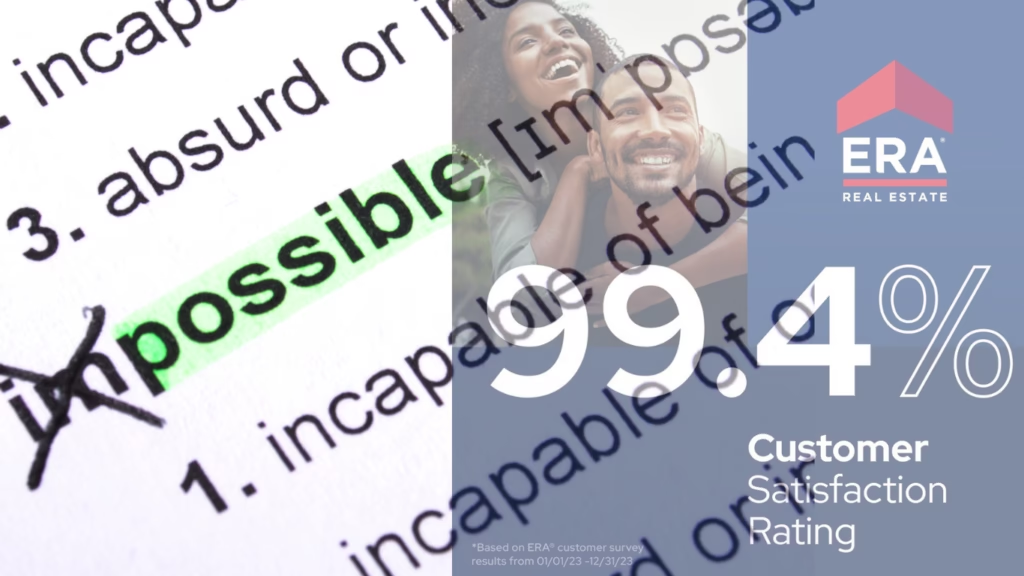Unlocking the Potential: A Comprehensive Feasibility Study for Real Estate Projects
In the competitive world of real estate development, unlocking the potential of a project is the key to success. A comprehensive feasibility study provides developers with the knowledge they need to make informed decisions and maximize the value of their investments. From market analysis and site evaluation to financial projections and risk assessment, this study is a crucial step in the real estate development process.
At ERA Egypt, we understand the importance of thorough research and analysis in unlocking a project’s potential. Our team of experts is skilled in conducting comprehensive feasibility studies that not only provide valuable insights but also align with the unique vision and brand voice of our clients. By incorporating the latest industry trends and market dynamics, we ensure that our studies are accurate, reliable, and tailored to the specific needs of each project.
Whether you are a seasoned developer or a first-time investor, a comprehensive feasibility study is an essential tool in your arsenal. It not only helps you identify viable opportunities but also mitigates risks and uncovers untapped potential. So, if you’re looking to unlock the full potential of your real estate project, contact ERA Egypt today and let us guide you towards success.

Importance of Conducting a Feasibility Study
Conducting a feasibility study is paramount in the realm of real estate development, as it serves as the foundation upon which all subsequent decisions are made. This study assesses the viability of a project from multiple angles, allowing developers to identify potential obstacles before they become costly mistakes. By understanding market conditions, financial projections, and the regulatory landscape, stakeholders can make informed choices that align with their strategic goals. In essence, a feasibility study is a risk management tool that helps to safeguard investments.
Additionally, feasibility studies create a roadmap for the project, detailing the steps necessary to achieve success. They provide insight into the demand for the proposed development, the competitive landscape, and potential profitability. This comprehensive analysis not only aids in decision-making but also enhances the credibility of the project when seeking financing or partnerships. Investors and stakeholders are more likely to support initiatives that demonstrate thorough planning and evidence-based projections, making the feasibility study a critical component of the project development process.
Finally, the importance of a feasibility study extends beyond its immediate implications for the project at hand. It fosters a culture of due diligence and strategic thinking within development teams. By prioritizing research and analysis, developers can cultivate an environment where informed decisions are the norm, leading to more successful projects in the long run. In a competitive market, this proactive approach can be the differentiator that sets a successful development apart from its peers, ultimately unlocking the full potential of real estate investments.
What are the 5 Major Components of a Project Feasibility Study?

A comprehensive project feasibility study is typically built around five major components that together provide a holistic view of the project’s potential. The first component is market analysis, which involves assessing the demand for the proposed development within the target area. This entails examining demographic trends, local economic conditions, and consumer preferences. A thorough market analysis can reveal opportunities for growth and help developers tailor their projects to meet market needs, ensuring a higher likelihood of success.
The second component is the technical analysis, which focuses on the physical aspects of the project. This includes evaluating the site conditions, infrastructure requirements, and design considerations. A detailed technical analysis helps identify any potential challenges related to construction, zoning, or environmental issues that could impact the project’s feasibility. By addressing these factors early in the planning process, developers can minimize risks and avoid costly delays.
Financial analysis is the third critical component of a feasibility study. This involves creating detailed financial projections, including estimates of costs, revenues, and profitability over the project’s lifecycle. A sound financial analysis allows stakeholders to understand the economic viability of the project and make informed investment decisions. This component often includes sensitivity analyses to assess how various factors, such as changes in market conditions or interest rates, could impact the project’s financial performance.
The fourth component of a project feasibility study is the legal and regulatory framework. This aspect examines the zoning laws, building codes, and other regulations that may affect the development. Understanding these legal requirements is essential for ensuring compliance and avoiding potential legal challenges that could derail the project. Engaging with local authorities and legal experts early in the process can provide valuable insights into necessary permits and approvals, streamlining the development process.
Lastly, the fifth component addresses the risks and challenges associated with the project. This includes identifying potential pitfalls, such as market volatility, construction delays, and regulatory hurdles. A comprehensive risk assessment enables developers to devise strategies for mitigating these risks, ensuring that they are prepared for various scenarios. By understanding the inherent challenges, stakeholders can make more informed decisions and develop contingency plans that safeguard their investments.
Market Analysis for Real Estate Projects
Market analysis is a foundational aspect of any feasibility study, as it provides insights into the dynamics of supply and demand in a specific area. A well-conducted market analysis begins with the identification of the target market, which involves defining the demographics and characteristics of potential buyers or renters. This step is crucial, as understanding who the end-users are will guide decisions regarding project design, pricing, and marketing strategies.
In addition to demographic analysis, an effective market analysis also examines local economic conditions. Factors such as employment rates, income levels, and population growth can significantly influence demand for real estate. Developers must consider how these economic indicators impact the market’s ability to absorb new projects. Furthermore, evaluating the competitive landscape is essential; understanding existing developments and their performance provides valuable context for assessing the feasibility of a new project. This competitive analysis can reveal gaps in the market that a new development could fill, thus enhancing its attractiveness to investors.
Lastly, market trends must be assessed to forecast future demand and pricing. This includes analyzing historical data and current economic indicators, as well as considering broader trends such as urbanization, lifestyle shifts, and technological advancements. By synthesizing this information, developers can make educated predictions about the market’s trajectory, thereby informing their project decisions. Ultimately, a thorough market analysis equips developers with the knowledge needed to position their projects effectively and optimize their investment potential.

Financial Analysis for Real Estate Projects
Financial analysis is a critical component of a feasibility study, serving as the backbone for understanding the economic viability of a project. This analysis begins with estimating the total development costs, which encompass land acquisition, construction expenses, financing costs, and soft costs such as permits and legal fees. Accurate cost estimation is vital, as any discrepancies can significantly impact the project’s profitability. Engaging with experienced contractors and financial advisors can help ensure that all potential expenses are accounted for.
Once the total costs have been estimated, the next step is to project potential revenues. This involves estimating rental income, sales prices, and occupancy rates based on the market analysis conducted earlier. Developers must consider various scenarios to develop a range of revenue projections, including optimistic, pessimistic, and most likely outcomes. This approach allows for a more comprehensive understanding of the project’s financial performance under different market conditions.
The final stage of financial analysis involves calculating key performance indicators such as return on investment (ROI), net present value (NPV), and internal rate of return (IRR). These metrics help stakeholders evaluate the profitability of the project and compare it against other investment opportunities. A robust financial analysis not only highlights the project’s potential returns but also aids in securing financing by demonstrating to investors that the project is well-researched and economically viable. By conducting a thorough financial analysis, developers can confidently move forward with their projects, knowing they are making informed decisions based on solid financial data.
Technical Analysis for Real Estate Projects
Technical analysis is a crucial part of a comprehensive feasibility study, as it assesses the practical aspects of the proposed development. This analysis begins with site evaluation, which includes examining the physical characteristics of the land, such as topography, soil conditions, and access to utilities. Understanding these factors is essential for determining the suitability of the site for the intended development. For instance, certain soil types may require additional foundation work, impacting overall construction costs and timelines.
In addition to site conditions, technical analysis also involves evaluating the infrastructure requirements for the project. This includes assessing the availability and capacity of essential services such as water, sewage, electricity, and transportation access. Developers must consider whether existing infrastructure can support the proposed development or if upgrades will be necessary. Engaging with local utility providers and transportation authorities early in the process can provide valuable insights into potential challenges and required improvements.
Finally, the technical analysis encompasses design considerations that inform the project’s layout and aesthetics. This aspect requires collaboration with architects and engineers to ensure that the development aligns with local zoning regulations and community standards. By addressing technical factors early in the planning process, developers can mitigate risks related to construction delays and unforeseen costs, ultimately enhancing the project’s overall feasibility.

Legal and Regulatory Considerations for Real Estate Projects
Navigating the legal and regulatory landscape is a vital aspect of any feasibility study for real estate projects. Developers must understand the zoning laws and land use regulations that govern the proposed site. This includes determining whether the intended use aligns with existing zoning classifications and identifying any restrictions that may impact the project. Engaging with local planning departments can provide clarity on zoning requirements and potential obstacles, allowing developers to plan accordingly.
In addition to zoning considerations, developers must also be aware of building codes and safety regulations that govern construction practices. Compliance with these codes is essential to ensure the safety and legality of the development. Failure to adhere to local regulations can result in costly fines, project delays, or even the rejection of building permits. Therefore, it is crucial for developers to work with legal professionals who specialize in real estate to navigate these complexities effectively.
Moreover, environmental regulations must be taken into account during the feasibility study. Developers should assess whether the project will require an environmental impact assessment (EIA) and be aware of any potential environmental concerns associated with the site. This may include factors such as wetlands, endangered species habitats, or historical preservation requirements. By proactively addressing legal and regulatory considerations, developers can mitigate risks and streamline the approval process, paving the way for a successful project launch.
Risks and Challenges in Real Estate Project Feasibility Studies
Real estate project feasibility studies are inherently fraught with risks and challenges that can impact the success of a development. One of the primary risks is market volatility, which can lead to fluctuations in demand and pricing. Economic downturns, changes in interest rates, or shifts in consumer preferences can all affect a project’s viability. Developers must remain vigilant and adaptable, continuously monitoring market conditions to adjust their strategies as needed.
Another significant challenge is the potential for unforeseen costs during the development process. Construction delays, material shortages, or changes in labor costs can lead to budget overruns that threaten the project’s financial viability. Therefore, it is essential for developers to incorporate contingency plans into their financial projections, allowing for flexibility in the face of unexpected challenges. Utilizing experienced contractors and project managers can also help mitigate risks related to construction.
Moreover, navigating the regulatory landscape poses its own set of challenges. Regulatory changes or delays in obtaining necessary permits can stall a project, leading to increased costs and extended timelines. Developers must stay informed about local regulations and engage with authorities early in the process to ensure compliance. By proactively addressing these risks and challenges, developers can enhance the likelihood of project success and protect their investments.
Is a Feasibility Study Qualitative or Quantitative?

A feasibility study encompasses both qualitative and quantitative elements, making it a comprehensive tool for evaluating project viability. The quantitative aspect involves numerical data and statistical analysis, allowing developers to make informed decisions based on hard evidence. Financial projections, cost estimates, and market demand quantifications fall into this category. These quantitative metrics provide a solid foundation for assessing the project’s potential returns and overall economic viability.
On the other hand, the qualitative component of a feasibility study focuses on subjective factors that may influence the project’s success. This includes evaluating community sentiment, stakeholder opinions, and potential social impacts. Understanding the qualitative aspects of a project is essential for gauging public perception and identifying potential challenges that may arise during development. Engaging with community members and conducting surveys can provide valuable insights into how the project is likely to be received.
By combining both qualitative and quantitative analyses, developers can gain a holistic understanding of a project’s feasibility. This integrated approach allows for a more nuanced evaluation of the project’s potential, enabling stakeholders to make informed decisions that consider both financial metrics and social implications. Ultimately, a comprehensive feasibility study that incorporates both elements enhances the likelihood of project success and aligns with the broader goals of community development.
Project Feasibility Checklist
A project feasibility checklist serves as a practical tool for developers to ensure that all critical aspects of the feasibility study are thoroughly addressed. The checklist typically begins with a market analysis, prompting developers to examine demographic trends, economic conditions, and competitive landscapes. By systematically reviewing these elements, stakeholders can gain clarity on the demand for the proposed project and its alignment with market needs.
Next, the checklist should include a detailed financial analysis, prompting developers to estimate total development costs, project potential revenues, and calculate key performance indicators. This step ensures that stakeholders have a clear understanding of the project’s economic viability and can identify any financial risks early in the process. Additionally, incorporating a technical analysis into the checklist allows for a thorough evaluation of site conditions, infrastructure requirements, and design considerations.
Legal and regulatory compliance is another vital aspect to include in the checklist. Developers should ensure that they have reviewed zoning laws, building codes, and any environmental regulations that may impact the project. Lastly, the checklist should address potential risks and challenges, prompting developers to develop contingency plans for various scenarios. By following a comprehensive project feasibility checklist, developers can streamline the feasibility study process and enhance the likelihood of project success.
Conclusion and Recommendations for Conducting a Comprehensive Feasibility Study
In conclusion, a comprehensive feasibility study is an indispensable tool for real estate developers seeking to unlock the potential of their projects. By systematically addressing market analysis, financial projections, technical considerations, legal compliance, and risk assessment, stakeholders can make informed decisions that enhance the likelihood of success. The importance of conducting thorough research and analysis cannot be overstated, as it serves to mitigate risks and uncover untapped opportunities.
As developers embark on their feasibility studies, it is recommended that they engage with industry experts and utilize a multidisciplinary approach. Collaborating with professionals in market research, finance, engineering, and law can provide valuable insights and enhance the depth of the analysis. Additionally, incorporating both qualitative and quantitative assessments will yield a more comprehensive understanding of the project’s viability, allowing developers to navigate complexities with confidence.
Ultimately, investing the necessary time and resources into a comprehensive feasibility study will pay dividends in the long run. By prioritizing due diligence and strategic planning, developers can position themselves for success in the competitive real estate market. As the landscape continues to evolve, staying informed and adaptable will be key to unlocking the full potential of real estate projects.


